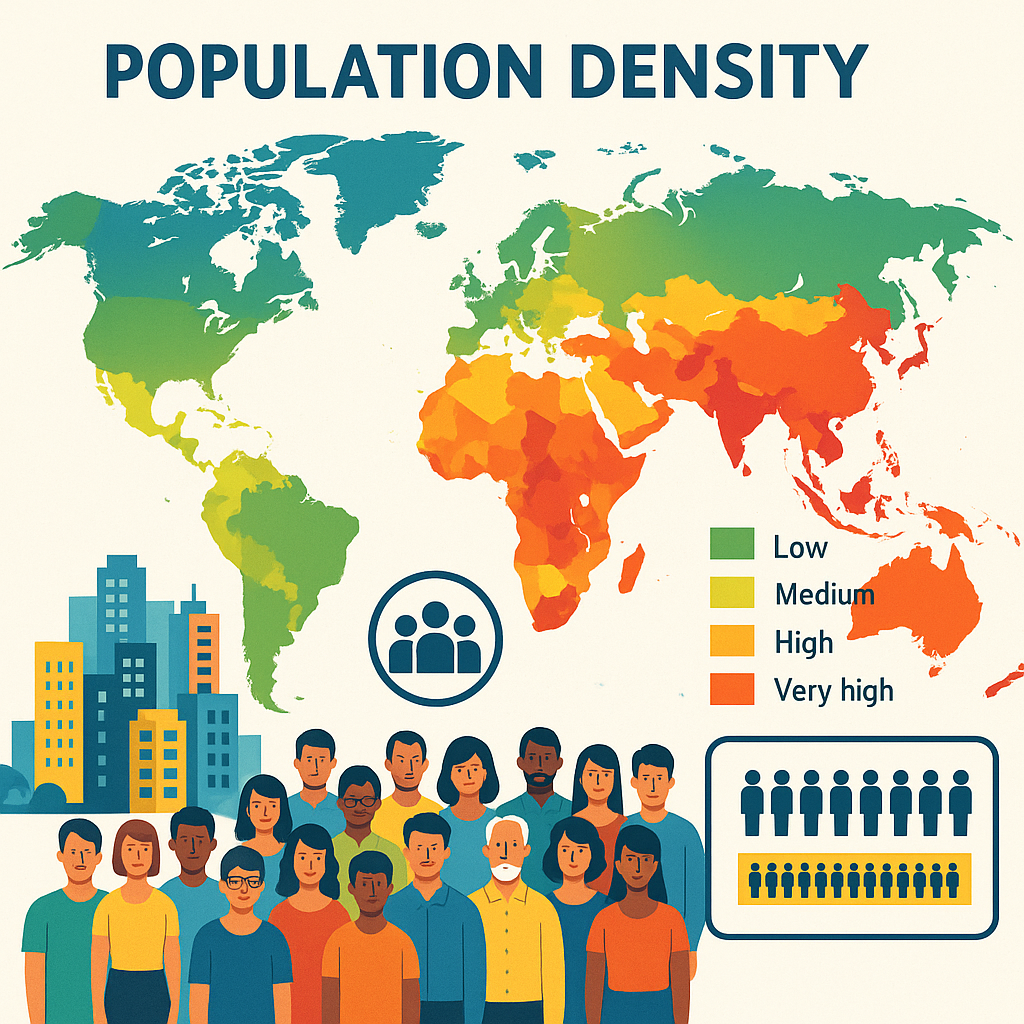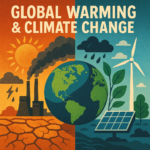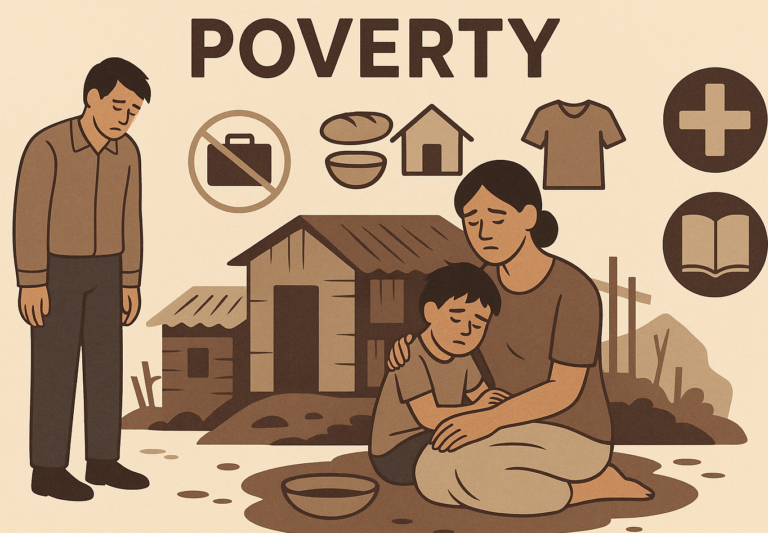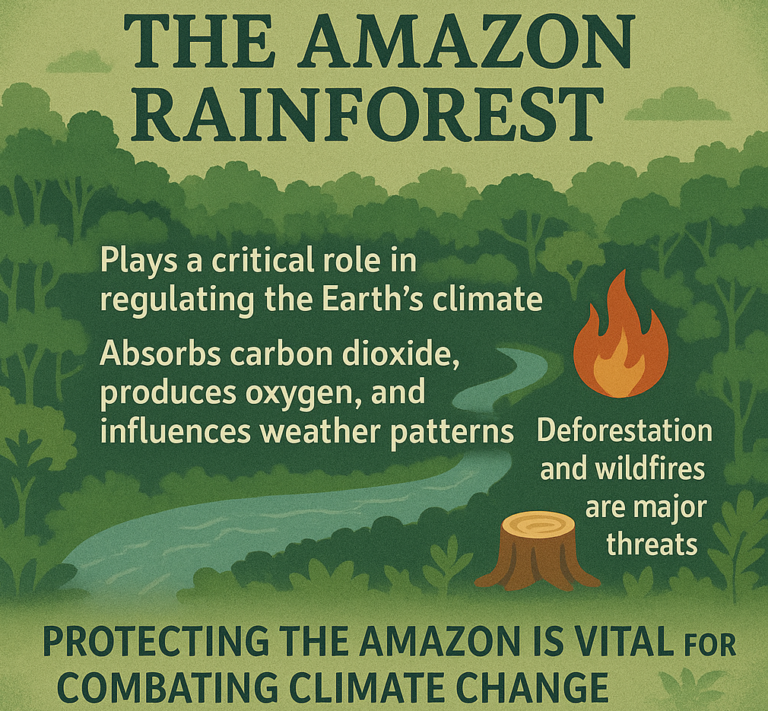Population Density Around the World
Population density is a measure used to describe the number of people living in a specific area, typically expressed as the number of individuals per square kilometer or square mile. It helps us understand how crowded or sparsely populated a region is and provides insight into human settlement patterns around the world. Population density varies significantly across different parts of the globe, influenced by a combination of factors such as geography, climate, economy, and social and cultural preferences. Understanding global population density helps explain the distribution of people and can reveal important information about the challenges and opportunities different regions face.

Factors Affecting Population Density
There are several key factors that impact population density. One of the most significant factors is geography. Natural features such as mountains, rivers, oceans, and deserts can create barriers that influence where people live. For instance, people tend to settle in areas with fertile land and access to water sources, which are essential for agriculture and survival. In contrast, regions with harsh climates like deserts or arctic tundra tend to have lower population densities because they are difficult to inhabit. Similarly, mountainous regions are often sparsely populated due to challenging terrain and limited resources.
Another important factor is climate. People are generally more likely to settle in areas with mild or temperate climates. For example, regions with warm weather and consistent rainfall are more conducive to farming, making them attractive for larger populations. Conversely, regions with extreme temperatures—whether hot or cold—tend to have fewer inhabitants because living conditions can be harsh. Areas like the Sahara Desert or northern Canada, where extreme climates prevail, are home to relatively small populations due to the difficulties of surviving in such environments.
The economy of a region plays a critical role in determining population density. People are often drawn to areas with better job opportunities, higher living standards, and developed infrastructure. Large cities, particularly those in economically advanced countries, tend to have very high population densities. For example, cities such as Tokyo, New York, or Mumbai are known for their bustling urban environments, where millions of people live and work in close proximity. These cities offer employment opportunities, advanced healthcare, education, and various services that attract people from rural areas or even other countries. In contrast, economically less developed areas or rural regions with fewer opportunities often experience lower population densities, as people may leave these areas in search of better prospects elsewhere.
High Population Density Areas
When examining population density globally, certain regions and cities stand out due to their exceptionally high population densities. Asia, for example, is home to some of the most densely populated countries in the world. Monaco, a tiny country located on the Mediterranean coast, has the highest population density globally, with over 25,000 people per square kilometer. This is due to its small size and the high concentration of people living in such a limited area. Other countries with high population density include Singapore, Bangladesh, and Taiwan, where a large number of people live in relatively small areas. These regions often experience challenges such as overcrowding, pressure on resources, and strain on infrastructure due to the high concentration of people in urban environments.
In cities, Tokyo in Japan is one of the most densely populated urban centers in the world, with millions of people living in a compact area. New York City, Mumbai, and Dhaka are also known for their high population density, with towering skyscrapers, busy streets, and a constant flow of people moving about their daily lives. These areas tend to have a mix of economic opportunities, cultural hubs, and well-developed infrastructure that make them attractive to people from various parts of the world. However, living in such crowded spaces also comes with challenges such as air pollution, traffic congestion, high cost of living, and a lack of affordable housing.
Low Population Density Areas
On the other hand, there are vast regions around the world with very low population density. These areas are often characterized by large expanses of land with few inhabitants. Canada, for example, is one of the most sparsely populated countries globally, despite being the second-largest country by land area. Much of its land is covered by forests, mountains, and tundra, which are difficult to inhabit. Most of the Canadian population is concentrated along the southern border with the United States, where the climate is more temperate and suitable for agriculture.
Russia also has a low population density, particularly in the northern and eastern regions. The harsh climate, with long, cold winters, and the remote locations make it difficult for large populations to settle. The majority of Russia’s population is concentrated in cities like Moscow and St. Petersburg, with vast stretches of the country remaining sparsely populated or uninhabited. Similarly, countries like Australia and Brazil have large landmasses but low population densities because large portions of their land are covered by deserts, rainforests, or mountains that are not conducive to settlement.
In many of these regions, the populations tend to be spread out, and people often live in smaller communities or towns rather than large cities. The vast distances between towns and cities in these sparsely populated areas can create challenges related to transportation, access to services, and economic development. For example, it can be difficult for residents in remote areas to access healthcare, education, and employment opportunities, which may contribute to the relatively low population densities in these regions.
Urbanization and Population Density
One significant trend that has influenced population density in recent decades is urbanization. As more people migrate from rural areas to cities in search of better opportunities, the population density of urban areas continues to rise. Urbanization has led to the growth of megacities—cities with populations of over 10 million people—such as Tokyo, Delhi, Shanghai, and Sao Paulo. These megacities are often marked by high levels of industrialization, a diverse workforce, and a wide range of services and amenities. However, urbanization also brings challenges such as overcrowding, pollution, housing shortages, and increased demand for resources like water, energy, and food.
In contrast, rural areas, especially in developed countries, have seen population declines or stagnation. Many young people move to cities for educational and employment opportunities, leaving older generations behind in rural areas. This demographic shift can lead to lower population densities in rural areas, as well as economic and social challenges for the communities that remain.
Summary:
In conclusion, population density around the world is a reflection of how people are distributed across the globe, influenced by factors like geography, climate, economy, and urbanization. High population density is typically seen in cities and regions with favorable climates and economic opportunities, while low population density is more common in remote, harsh, or less developed areas. Urbanization has played a significant role in increasing population density in cities, while rural areas in many parts of the world have seen population declines. Understanding population density helps us grasp the challenges and opportunities faced by different regions, and it is an important factor in planning for sustainable development, infrastructure, and resource management in the future.











